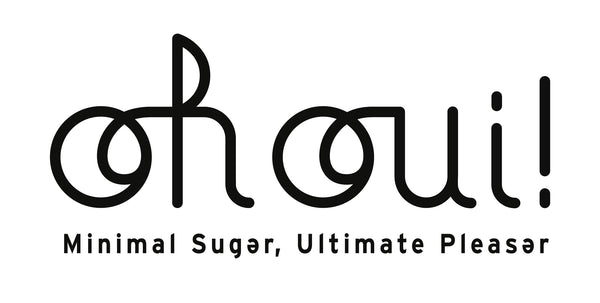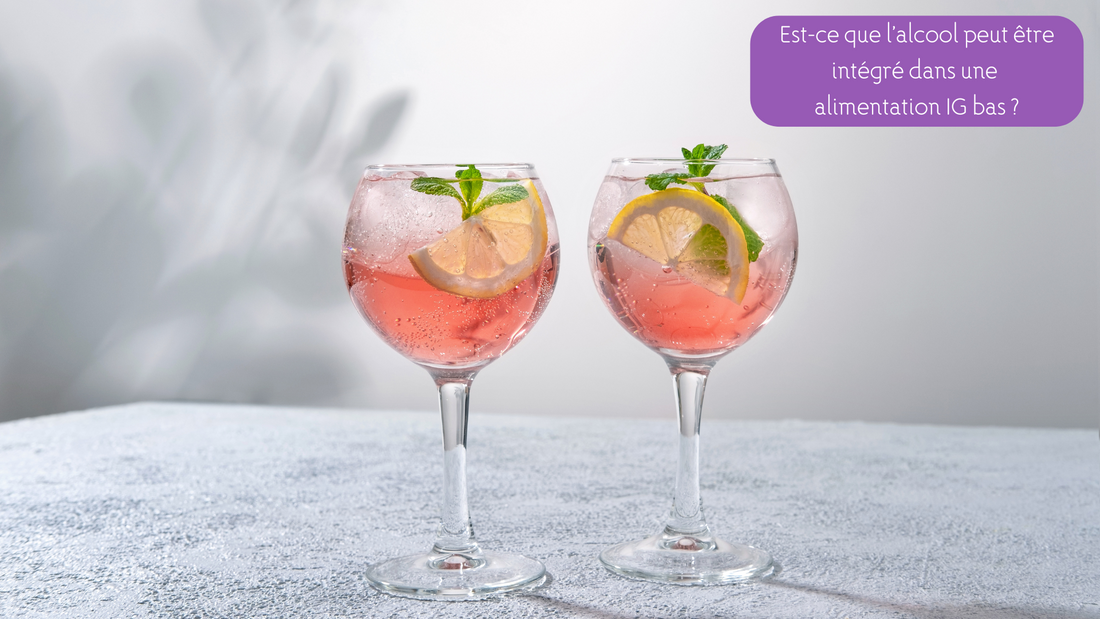Eating a low glycemic index (GI) diet is a great way to maintain stable blood sugar levels, manage your weight, and improve your overall health. However, a question often arises: can alcohol be consumed as part of a low glycemic index diet?
In this article, we share our tips for integrating alcohol wisely into your diet, and obviously, in moderation! 😉
👉 Understanding GI and alcohol
The glycemic index measures the ability of a food to raise blood sugar levels. Foods with a low GI (below 55) are digested more slowly, causing a gradual and moderate increase in blood sugar.
(Did you know? We have developed a glycemic index calculator to help you on a daily basis! Find out more about this great tool )
Alcoholic drinks, for their part, have varied GIs depending on their sugar composition. For example, beer explodes the scores with a GI of 110, even more than glucose which is the reference at 100! It will therefore be preferable to choose a glass of cider for example which has a glycemic index of 40.
Consuming alcohol generally lowers blood sugar levels and therefore increases the risk of a hypoglycemic attack which can occur up to 24 hours after ingestion.
👉 Which alcohols should be preferred in a low GI diet?
For those who wish to include alcohol in their low GI diet, here are the alcohols to favor:
- Favor pure spirits: vodka, gin, whiskey, and rum have a low or zero GI, because they contain little or no carbohydrates.
- Avoid cocktails that are often very sweet: Margarita, Piña Colada and other cocktails containing fruit juices or sweet syrups should be avoided due to their high GI.
- Choose dry wines: dry red and white wines have a lower GI than sweet or fortified wines.
- Watch portions: moderation is key!
|
Alcohol |
Glycemic Index (GI) |
|
Beer |
110 |
|
Liqueurs |
30-70 (depending on sugar content) |
|
Cider |
40 |
|
Sweet wine |
30 |
|
Dry white wine |
0 |
|
Red wine |
0 |
|
Spirits (vodka, whiskey, gin, etc.) |
0 |
👉 Tips for optimizing alcohol consumption
- Don't drink on an empty stomach: Consume alcohol while eating, preferably with foods rich in fiber and protein to slow the absorption of sugar.
- Stay hydrated: Drink water between glasses of alcohol to prevent dehydration.
- Be alert for signs of hypoglycemia: If you are taking diabetes medications, monitor your blood sugar closely and always have a source of fast carbohydrates on hand.
The answer is therefore: IN MODERATION. Indeed, alcohol can be integrated into a low GI diet by remaining reasonable and selecting alcohols and times of consumption 😊.
We recommend favoring low-carb drinks, avoiding sugary mixes and making sure to eat while consuming alcohol to maintain stable blood sugar levels. By following these tips, you can enjoy a drink every now and then without compromising your health goals. 🥂
If the subject interests you, find out why and how to eat with a low glycemic index in our dedicated article !
Delphine and Fanny









